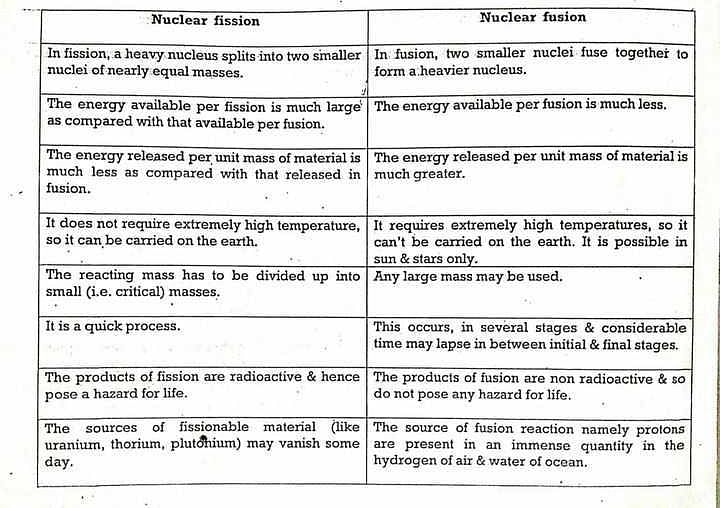1. Alpha Particles:
- Charge: +2 (double positive charge)
- Mass: 4 atomic mass units (AMU)
- Symbol: α
- Composition: Consists of two protons and two neutrons, similar to a helium nucleus.
- Speed: Moves at a slower speed compared to beta particles and gamma rays.
- Penetration: Due to their larger size and double positive charge, alpha particles have low penetration power. They can be stopped by a few centimeters of air or a sheet of paper.
- Ionization: Alpha particles cause significant ionization due to their large mass and charge. They can remove electrons from atoms, leading to the formation of positive ions.
2. Beta Particles:
- Charge: -1 (negative charge)
- Mass: Negligible (approximated to 0 AMU)
- Symbol: β
- Composition: Beta particles can be either electrons (β-) or positrons (β+). Electrons are produced during beta minus decay, while positrons are emitted during beta plus decay.
- Speed: Moves at a high speed, typically a significant fraction of the speed of light.
- Penetration: Beta particles have moderate penetration power. They can pass through a few millimeters of aluminum but can be stopped by a few millimeters of plastic or a thin sheet of aluminum.
- Ionization: Beta particles cause moderate ionization due to their smaller mass and charge compared to alpha particles. They can dislodge electrons from atoms, resulting in the formation of ions.
3. Gamma Rays:
- Charge: Neutral (no charge)
- Mass: 0 AMU (approximately)
- Symbol: γ
- Composition: Gamma rays are electromagnetic radiation, similar to X-rays and light.
- Speed: Moves at the speed of light.
- Penetration: Gamma rays have high penetration power. They can travel through several centimeters to several meters of dense material, such as lead or concrete, before being significantly attenuated.
- Ionization: Gamma rays cause low ionization compared to alpha and beta particles. They have minimal interaction with atoms but can still cause ionization through indirect processes, such as Compton scattering or the photoelectric effect.
In summary, alpha particles have the highest mass and charge, but the lowest penetration power. Beta particles have moderate mass and charge, and moderate penetration power. Gamma rays have no charge or mass, but the highest penetration power. Each particle type has different properties, which determine their behavior when emitted from a radioactive source and their interactions with matter.

